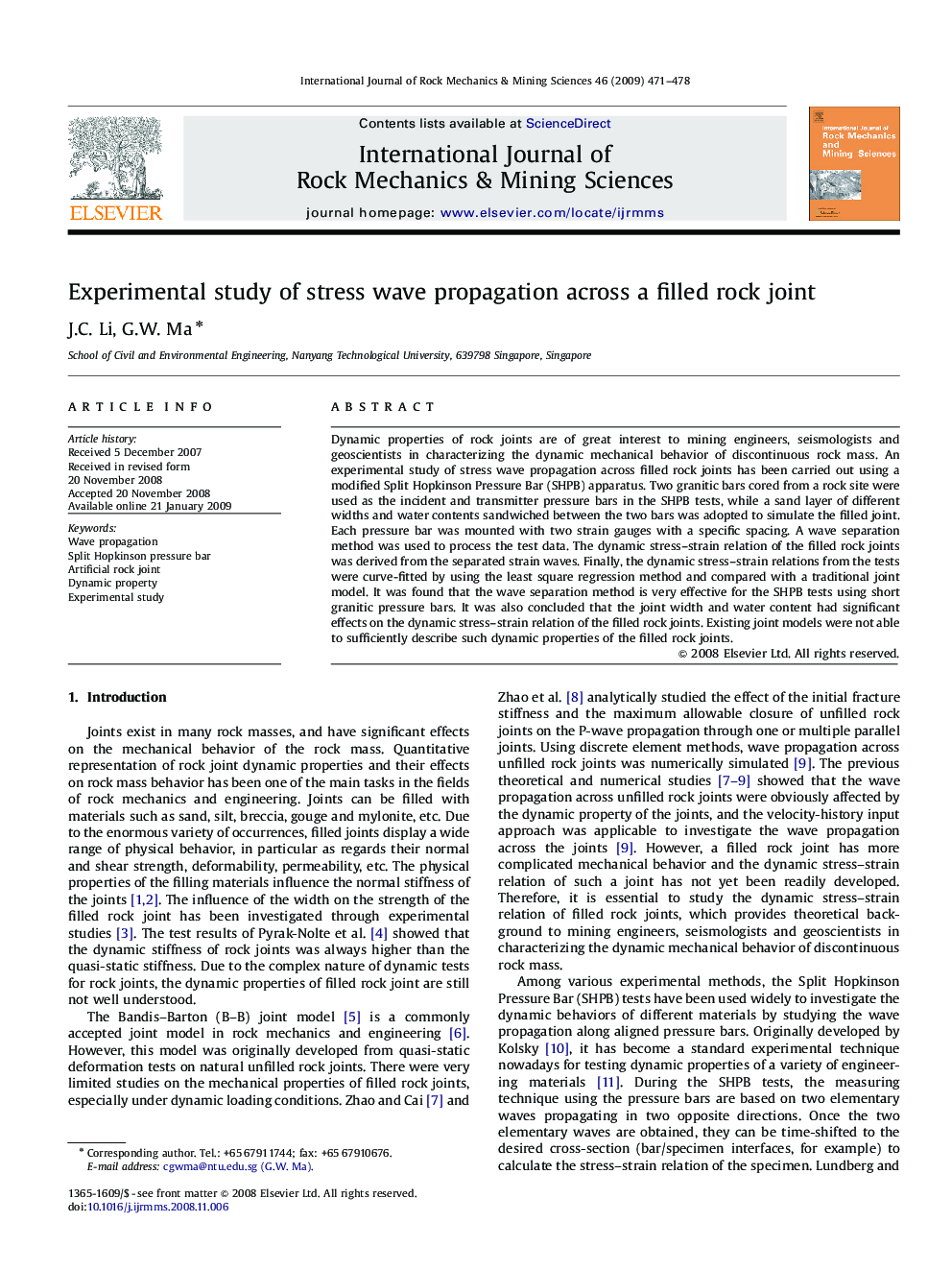| Article ID | Journal | Published Year | Pages | File Type |
|---|---|---|---|---|
| 810233 | International Journal of Rock Mechanics and Mining Sciences | 2009 | 8 Pages |
Dynamic properties of rock joints are of great interest to mining engineers, seismologists and geoscientists in characterizing the dynamic mechanical behavior of discontinuous rock mass. An experimental study of stress wave propagation across filled rock joints has been carried out using a modified Split Hopkinson Pressure Bar (SHPB) apparatus. Two granitic bars cored from a rock site were used as the incident and transmitter pressure bars in the SHPB tests, while a sand layer of different widths and water contents sandwiched between the two bars was adopted to simulate the filled joint. Each pressure bar was mounted with two strain gauges with a specific spacing. A wave separation method was used to process the test data. The dynamic stress–strain relation of the filled rock joints was derived from the separated strain waves. Finally, the dynamic stress–strain relations from the tests were curve-fitted by using the least square regression method and compared with a traditional joint model. It was found that the wave separation method is very effective for the SHPB tests using short granitic pressure bars. It was also concluded that the joint width and water content had significant effects on the dynamic stress–strain relation of the filled rock joints. Existing joint models were not able to sufficiently describe such dynamic properties of the filled rock joints.
